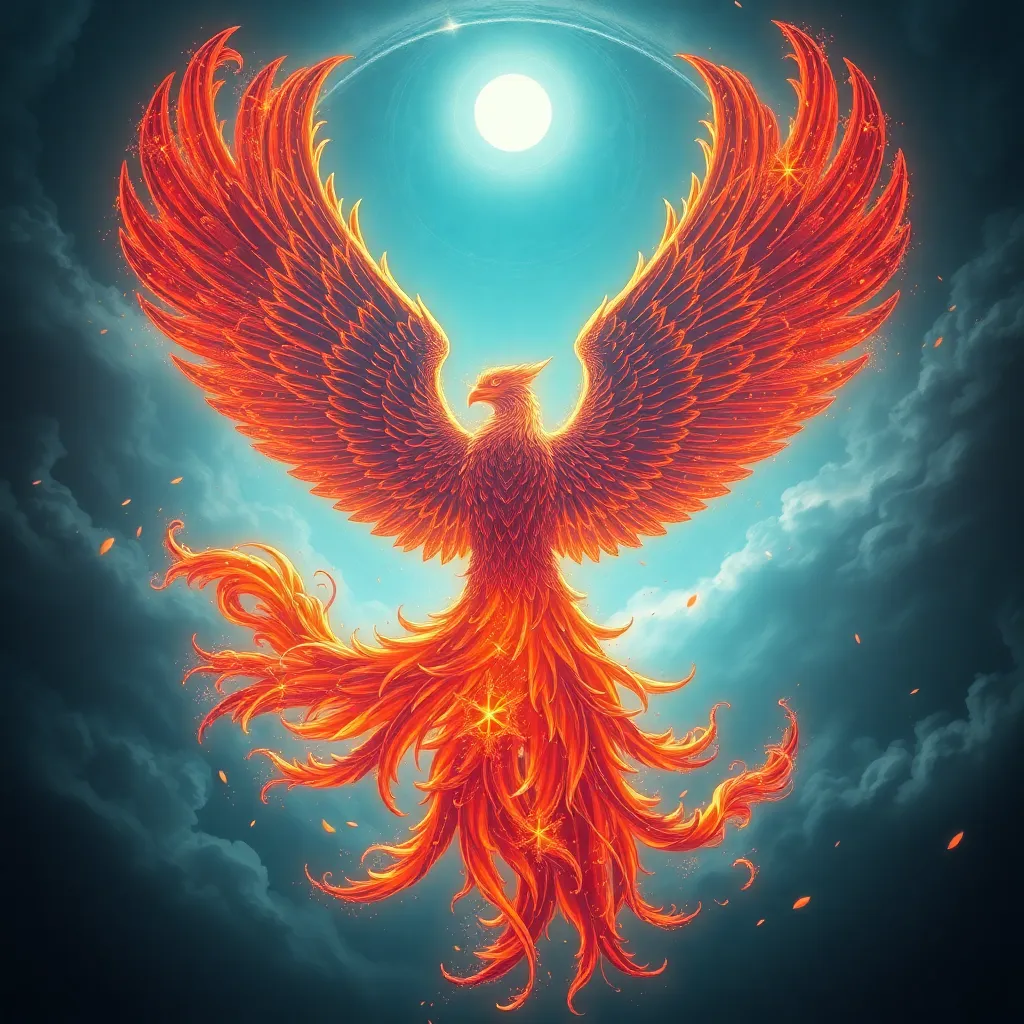The Phoenix and the Sun God: A Tale of Resurrection and Divine Power
I. Introduction
The myth of the Phoenix is a timeless tale that has captivated human imagination across cultures and epochs. This mythical bird is celebrated for its ability to rise from the ashes, symbolizing renewal and the cyclical nature of life. In many traditions, the Sun God plays a pivotal role, representing light, warmth, and life itself. This article aims to explore the intertwining themes of resurrection and divine power as reflected in the legends of the Phoenix and its association with various Sun Gods.
II. The Myth of the Phoenix
The origins of the Phoenix myth can be traced back to ancient civilizations, with the earliest references found in Egyptian texts around 3000 BC. Variations of the myth have emerged in Greek, Roman, and even Chinese cultures, each adding unique elements to the story.
- Egyptian Mythology: The Phoenix, known as the Bennu, was associated with the sun and creation, believed to be the soul of the sun deity Ra.
- Greek Mythology: The Greeks depicted the Phoenix as a bird that lived for 500 years before setting itself on fire and being reborn from its ashes.
- Chinese Mythology: The Fenghuang, often conflated with the Phoenix, symbolizes high virtue and grace, embodying the harmony of yin and yang.
The symbolism of the Phoenix as a creature of rebirth is profound. It embodies the idea that from destruction comes new life, reinforcing the belief that endings are merely preludes to new beginnings. This cycle of death and resurrection resonates deeply with human experiences of loss, change, and hope.
III. The Sun God Across Cultures
Throughout history, various cultures have revered Sun Gods, attributing them with immense power and influence over life on Earth. Here are some notable Sun Gods:
- Ra: The ancient Egyptian Sun God, representing creation and the cycle of life.
- Apollo: In Greek mythology, Apollo is associated with the sun, music, and prophecy, embodying beauty and knowledge.
- Inti: The Incan Sun God, considered the ancestor of the Incas, who provided warmth and sustenance.
The roles and attributes of these deities often include:
- Bringer of light and warmth.
- Symbol of life and fertility.
- Protector of the cosmos and order.
The connection between the Sun God and life-giving energy is a recurring theme in mythology. The sun is often seen as a source of vitality, essential for growth and sustenance, mirroring the life cycle of the Phoenix.
IV. The Relationship between the Phoenix and the Sun God
The Phoenix is frequently associated with the Sun, embodying the very essence of solar power and its regenerative capabilities. This relationship manifests in various myths and stories:
- The Phoenix is often depicted rising into the sky, symbolizing ascension to the divine.
- In many legends, the Phoenix’s rebirth corresponds with the rising sun, emphasizing the connection between the two figures.
Myths that depict the connection between the Phoenix and the Sun God often highlight their mutual influence. For instance, in Egyptian mythology, the Bennu bird is closely linked with Ra, signifying the cyclical nature of creation and destruction as the sun rises and sets.
V. Themes of Resurrection in the Phoenix Myth
At the heart of the Phoenix myth is the process of renewal and transformation. The narrative not only illustrates physical resurrection but also signifies emotional and spiritual rebirth. This theme resonates across various cultures, each interpreting the concept of resurrection in unique ways:
- Spiritual Renewal: Many cultures view the Phoenix as a symbol of the soul’s journey and its capacity for transformation.
- Hope in Adversity: The Phoenix embodies resilience, offering hope to those facing challenges or despair.
The moral and philosophical implications of rebirth invite reflection on human existence. The Phoenix teaches that every ending is an opportunity for a new beginning, urging individuals to embrace change and seek transformation in their lives.
VI. Divine Power and Its Representation
The Sun God serves as a symbol of ultimate power, representing the unyielding force of nature and its ability to sustain life. In contrast, the Phoenix represents resilience and renewal, reminding us of the strength inherent in overcoming adversity.
These symbols reflect human beliefs about divinity and power, portraying the sun as a source of life and the Phoenix as a testament to the enduring spirit. Together, they illustrate the duality of destruction and creation, emphasizing the balance of these forces in the universe.
VII. Modern Interpretations and Cultural Impact
The imagery of the Phoenix continues to resonate in contemporary literature and art, symbolizing hope and renewal in various narratives:
- In literature, the Phoenix often appears as a metaphor for personal growth and transformation.
- Artistic representations of the Phoenix embody vibrant colors and dynamic forms, capturing the essence of rebirth.
Additionally, the influence of Sun Gods persists in modern spirituality, where they are often invoked as symbols of guidance and protection. The relevance of these myths in today’s society underscores the enduring human fascination with themes of resurrection and divine power.
VIII. Conclusion
In conclusion, the Phoenix and the Sun God embody significant themes of resurrection and divine power that resonate across cultures and time. Their stories reflect the cyclical nature of life, illustrating how destruction can lead to rebirth and renewal. As we explore these timeless myths, we gain insights into the human experience, highlighting the importance of hope, resilience, and the quest for meaning in our lives.
The enduring legacy of the Phoenix and the Sun God continues to inspire and guide us, reminding us that even in the darkest moments, there is always the possibility of rising anew.



